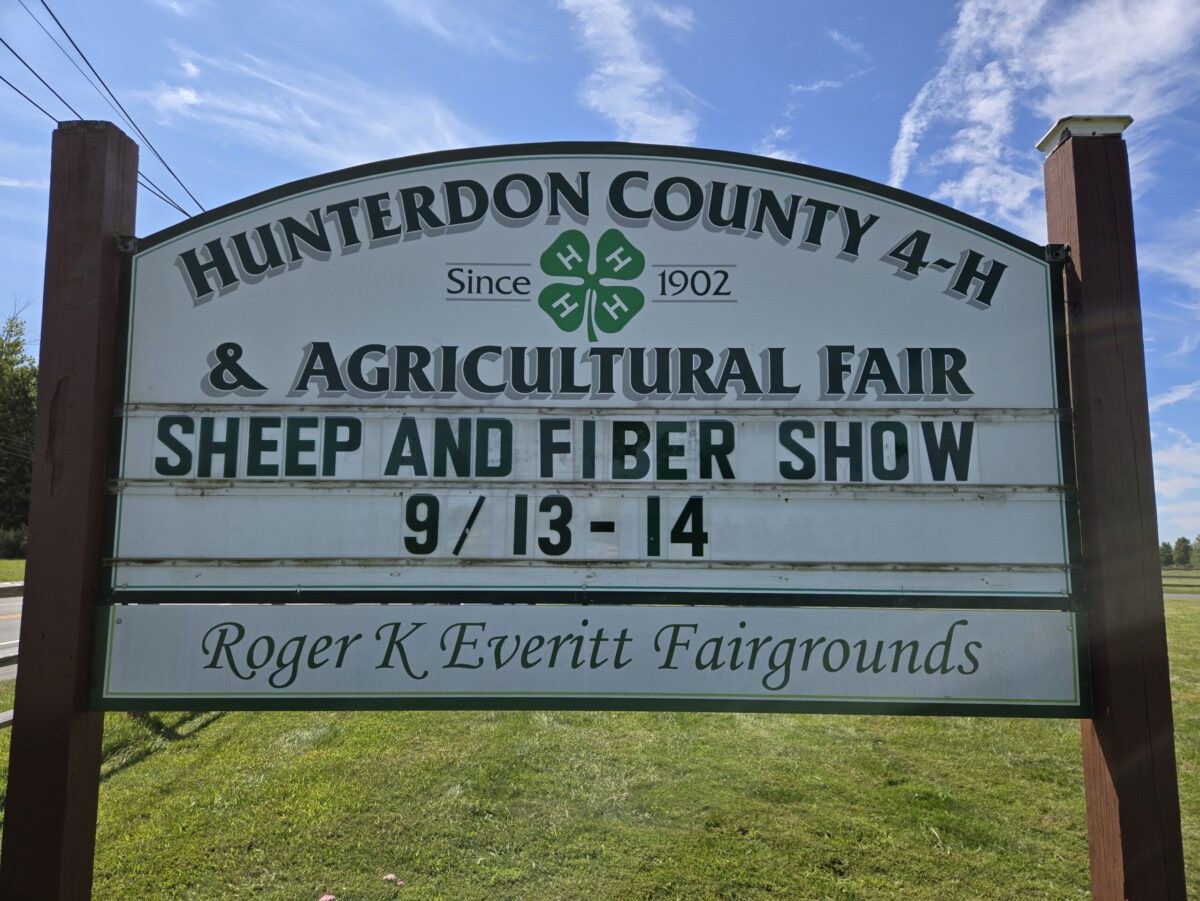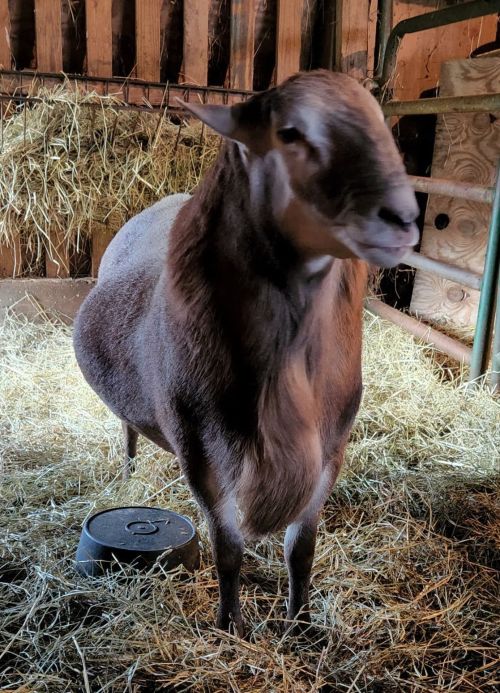The following article was published by : Penn State Extension
Sheep producers can seek to ensure buyers that their sheep are free from specific genetic abnormalities or diseases through testing. Learn about testing options in this publication
One of the last things a sheep producer would like to hear from one of their customers is that they sold a sheep that produced lambs with genetic or disease issues. This would be a particularly unwanted call when that issue could be identified through testing. Some testing is commonplace, while other tests are increasing in significance.
The most common tests performed would probably be for scrapie susceptibility and spider lamb syndrome. Additional tests covered in this article include dwarfism, ectodermal dysplasia (hairy lamb syndrome), and ovine progressive pneumonia. None of these issues can be treated, so control involves identifying affected individuals and culling them from the flock.
Scrapie
Scrapie affects the central nervous system in sheep and goats. In cattle, this disease is called mad cow disease, and in deer, it is called chronic wasting disease. The disease is considered a transmissible spongiform encephalopathy (TSE) because it affects the brain and causes it to look like a sponge. The impact on the brain leads to problems with muscle control or incoordination and problems with moving and getting up from lying down. Sheep infected with scrapie may stumble and fall or lift their legs higher than normal when walking. Infected sheep often experience intense itching, which causes bare spots on their sides and sometimes open sores. The bare spots may also appear on their head due to head pressing.
Sheep producers can test for susceptibility to this disease using tissue samples or blood samples. Testing looks at the DNA genotype at codon 171 or 136. Codon 171 testing results identify genotypes as RR for sheep resistant to scrapie if exposed to the disease, QR for sheep that have some susceptibility to the disease, and QQ for sheep that are highly susceptible when exposed to the disease. Codon 136 testing works the same way, with AA sheep resistant to the disease, AV sheep having some susceptibility to the disease, and VV sheep being very susceptible to the disease. More information on scrapie and the scrapie eradication program can be found at USDA’s Sheep and Goat Disease or by contacting your local veterinarian.
Spider Lamb Syndrome (Ovine Hereditary Chondrodysplasia)
Spider lamb syndrome causes skeletal deformities in affected lambs. Some affected lambs may be born dead or aborted. However, most lambs are born alive. Often, these lambs have twisted spines and deformed legs that look like spider legs. The condition typically worsens as lambs grow, frequently resulting in lambs not surviving past six months. A gene mutation causes the disease, which impacts bone and cartilage growth. The mutation occurs most often in black-face sheep and crosses. Sheep with two copies of this gene mutation exhibit the disease. However, testing can identify gene mutation carriers, and therefore, producers can cull these individuals and prevent passing the gene mutation to offspring.
Producers can use hair, tissue, or blood samples to test for spider lamb syndrome. The results of these tests categorize lambs with the disease as SS, carriers of the gene mutation as SN, and lambs free of the gene mutation as NN.
Sheep Dwarfism
Dwarfism in sheep is a genetic defect that causes shortened extremities from abnormal cartilage development and bone growth, thus leading to a smaller overall size. Some lambs may be born with a domed head and shortened nose. Research by Thompson et al. (Inherited Chondrodysplasia in Texel Sheep) noted that affected lambs appeared normal at birth but grew slowly and developed a short neck and a wide-based stance. These lambs also showed an intolerance of exercise. Many of the severely affected lambs died within three to four months after birth. Researchers also noted abnormalities in the trachea. Lambs that survived to breeding age developed severe degenerative joint disease and had to be euthanized.
Producers can test for dwarfism using tissue samples or blood samples. The results of these tests categorize dwarf lambs as DD, which will pass the mutation to their offspring 100% of the time. Normal-sized lambs that are carriers of the mutation are categorized as FD and will pass the mutation to their offspring 50% of the time. Normal lambs that do not have the mutation are categorized as FF. They do not have the gene for dwarfism and, therefore, would not pass the mutation to offspring.
Hairy Lamb Syndrome (Ectodermal Dysplasia)
Hairy lamb syndrome is a genetic disorder that appears as fine wispy hair instead of wool on the lamb’s body. This syndrome is characterized by thin skin, abnormal teeth and jaw, and dysfunctional sweat glands. The disorder affects the development of the ectodermal layer in embryos, which plays a role in the animal’s hair, skin, teeth, and hoof development. Lambs often die within several weeks after birth.
Producers can test for hairy lamb syndrome using tissue samples or blood samples. The results of these tests categorize affected lambs as EDA. Normal-appearing lambs that are carriers of the mutation are categorized as EDC and will pass the mutation to their offspring 50% of the time. Normal-appearing lambs that do not have the mutation are categorized as EDF. They do not have the gene for hairy lamb syndrome and, therefore, would not pass the mutation to offspring.
Ovine Progressive Pneumonia (OPP)
Unlike the other issues above, OPP is caused by a lentivirus infection rather than a genetic mutation. This virus affects the lungs and udder. Many producers overlook OPP in their flock until mature ewes begin losing weight, develop respiratory problems, or develop a hard udder that does not produce milk for lambs. This disease is similar to caprine arthritis and encephalitis or CAE in goats. The American Association of Small Ruminant Practitioners fact sheet on Ovine Progressive Pneumonia describes OPP as a “slow-growing virus that causes wasting and replaces healthy tissue with solid non-functional tissue due to the cellular immune response of sheep to the virus.” They state that the virus cannot survive for very long outside of the sheep. The most common way sheep contract the virus is through respiratory particles.
Producers can test for OPP using a blood sample. Labs conduct one of two serologic tests to identify affected individuals. Affected individuals can also be identified through necropsy examination of the lungs or mammary tissue.
Any producers who suspect one or more of these issues within their flock should consult their local veterinarian and begin testing to identify carriers. Producers may also wish to select rams and replacement females with negative test results, particularly when purchasing breeding stock from other producers if they have concerns about these issues.
This article was first printed in the Dorset Connection, the newsletter published by the Continental Dorset Club.





